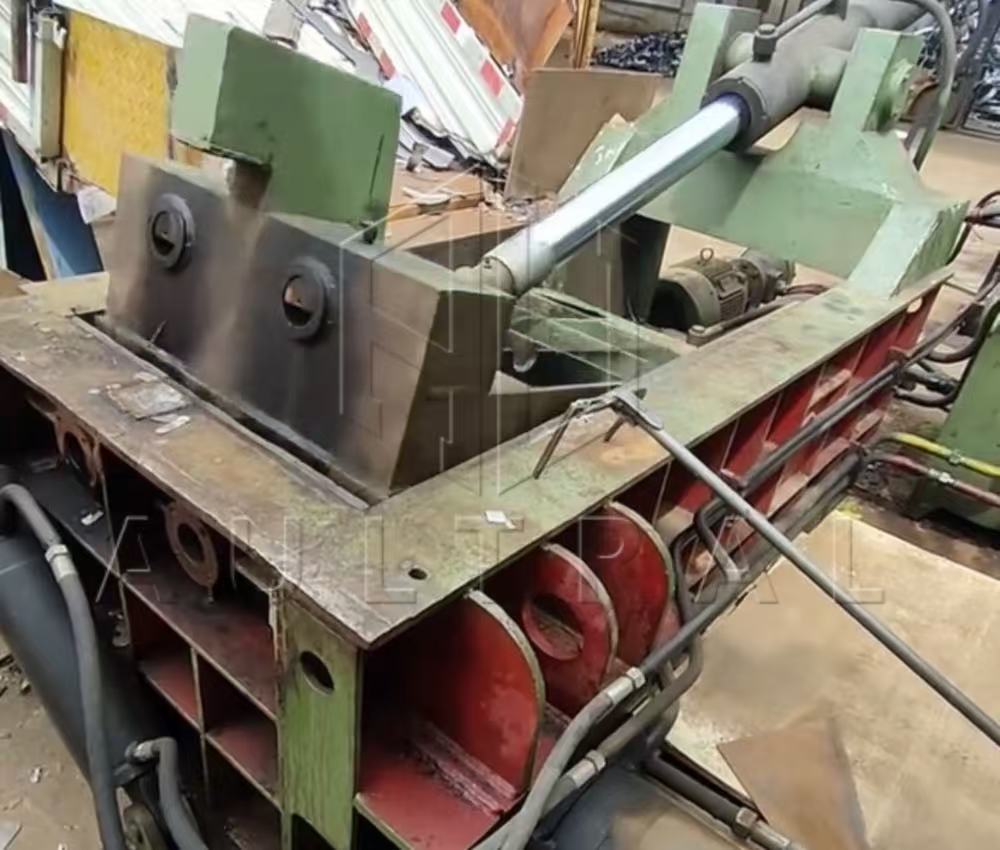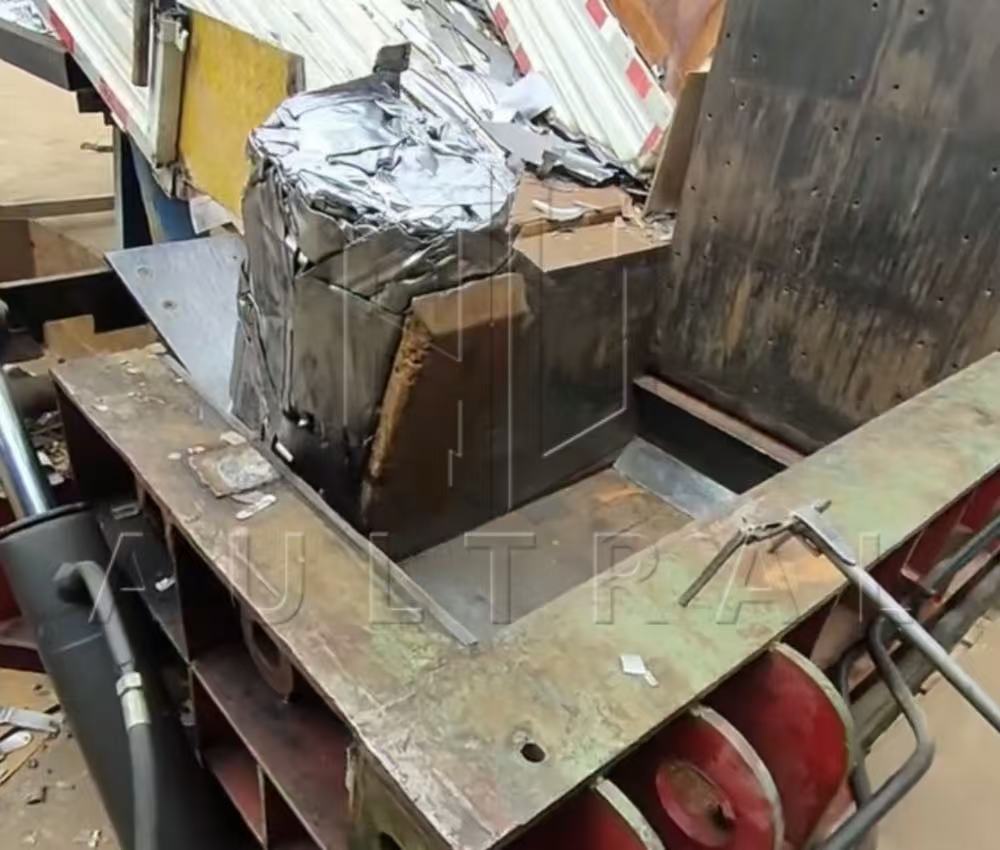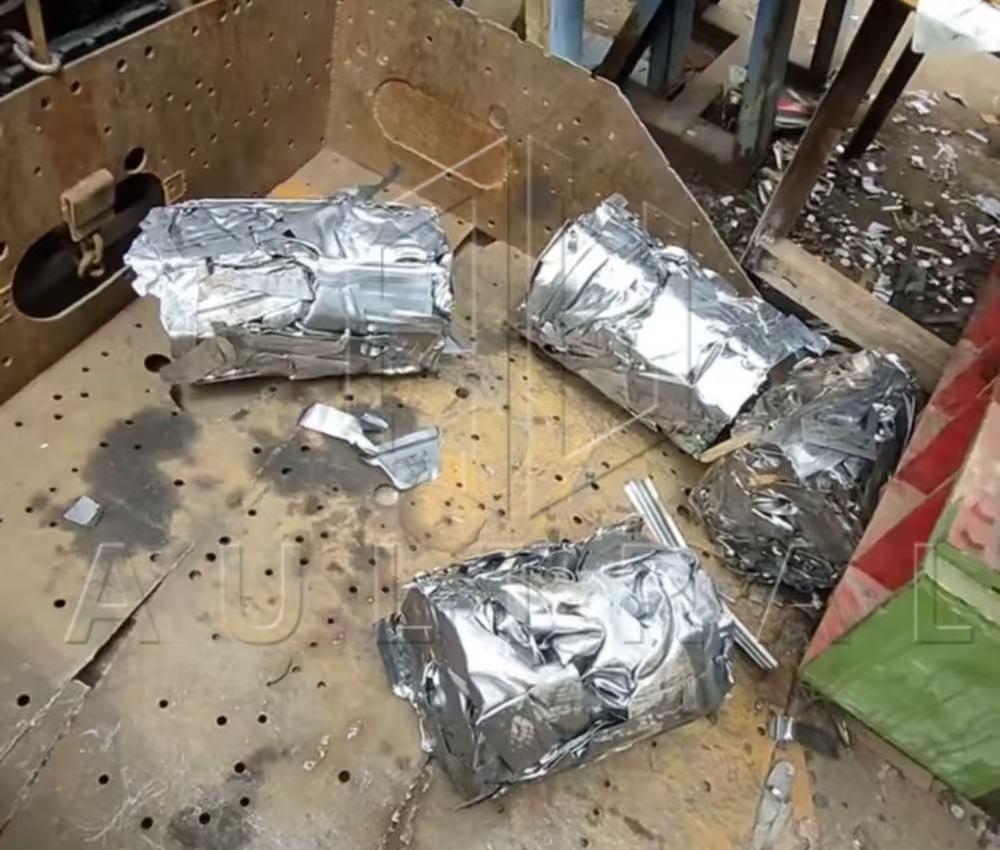In today’s rapidly growing recycling and scrap metal industry, businesses face increasing pressure to reduce costs, improve efficiency, and adopt sustainable practices. A horizontal metal baler is a key solution that allows companies to compress metal scrap into dense, uniform bales, making storage, handling, and transportation far more manageable. While brand-new machines are often the first choice, second-hand horizontal metal balers offer a compelling alternative—combining high performance with affordability.
This guide will explain why investing in a second-hand baler can be a smart business decision, highlight its environmental and economic benefits, and provide practical tips for choosing the right model for your operation.
Understanding Horizontal Metal Balers

A horizontal metal baler is an industrial machine designed to compress metal scrap into tight, uniform bales. Unlike vertical balers that operate top-down, horizontal balers use a push-through system, allowing for continuous feeding and larger bale sizes. This makes them ideal for medium to large recycling plants, metal processing facilities, and scrap yards.
Key Features Include:
-
Heavy-duty hydraulic cylinders for strong compression
-
Wide feeding boxes to accommodate large or irregular scrap pieces
-
Adjustable bale sizes and weights for versatile storage and transport
-
Durable steel frames designed for long-term industrial use
Understanding these features is essential when comparing second-hand models, as it ensures you choose a machine capable of meeting your production needs.
Environmental Benefits Of Choosing A Second-Hand Baler

In addition to recycling metal, purchasing a second-hand baler contributes significantly to sustainability. Manufacturing new heavy equipment consumes large amounts of raw materials, energy, and water, leading to higher carbon emissions. By opting for a used machine, your business can:
-
Reduce Carbon Footprint: Extending the life of an existing baler reduces the demand for new manufacturing, helping to lower greenhouse gas emissions.
-
Conserve Resources: Reusing machinery saves steel, metals, and other materials that would otherwise be used in new equipment production.
-
Minimize Industrial Waste: Refurbishing and reusing machines keeps them out of landfills, reducing environmental impact.
Choosing a second-hand horizontal metal baler is not only cost-effective but also demonstrates a commitment to environmental responsibility, which can enhance your company’s reputation with clients and partners.
Economic Advantages Of Second-Hand Machines
Cost savings are often the main reason companies consider second-hand equipment. A horizontal metal baler represents a major investment, but a refurbished unit offers the same functionality at a significantly lower price. Benefits include:
-
Lower Initial Investment: A used baler typically costs 40–60% less than a new one, making it accessible for small and medium-sized businesses.
-
Faster Return On Investment: Reduced upfront costs allow businesses to see profits sooner.
-
Minimal Depreciation: Used machines have already undergone primary depreciation, keeping their value more stable over time.
-
Budget Flexibility: Savings on equipment can be allocated to other operations, such as conveyors, shredders, or additional recycling tools.
These financial advantages make second-hand balers a practical and strategic choice for any recycling operation.
Operational Benefits Of Horizontal Metal Balers
Horizontal balers are favored over vertical models for several operational reasons:
-
High Throughput: Continuous feeding systems allow processing of larger volumes per hour.
-
Versatility: They handle various scrap metals, including steel, aluminum, and mixed metals.
-
Uniform Bales: Adjustable settings ensure consistent bale size and weight, simplifying storage, handling, and transport.
-
Durability: Heavy-duty frames and hydraulic systems ensure long-term performance, especially when properly maintained.
By combining speed, consistency, and robustness, horizontal balers—new or second-hand—can greatly enhance your facility’s efficiency.
How To Choose The Right Second-Hand Horizontal Metal Baler
Selecting the ideal model is crucial to ensure efficiency and reliability. Consider the following factors:
Evaluate Material Type And Volume
Determine the primary scrap type your facility processes, whether steel, aluminum, or mixed metals. Consider the daily throughput to choose a baler with adequate compression force and feeding capacity.
Check Bale Size And Weight Requirements
Bale dimensions and weight should align with storage facilities, trucks, or shipping requirements. Make sure the machine can produce bales that meet your operational needs.
Inspect Machine Condition
Even refurbished balers require thorough inspection:
-
Hydraulic system: cylinders, pumps, hoses
-
Structural integrity: frame and welding quality
-
Electrical and control systems
-
Wear parts: pressing plates, blades, and other components
A well-maintained used baler can operate efficiently for many years with minimal repair costs.
Consider Automation And Accessories
Some machines include automatic feeding systems, conveyors, or strapping mechanisms. Depending on your workflow, these features can reduce labor costs and increase productivity.
Source From Reliable Suppliers
Choose reputable suppliers who refurbish, test, and provide technical support. They often offer spare parts, service guidance, and warranties to ensure long-term satisfaction.
Maintenance Tips For Longevity

Proper maintenance maximizes the life and efficiency of a second-hand baler:
-
Regularly monitor and refill hydraulic oil
-
Inspect and replace worn hoses or components
-
Keep feeding boxes and compression chambers clean
-
Follow a routine lubrication schedule for moving parts
-
Periodically check electrical systems and control panels
Well-maintained machines minimize downtime and optimize production.
Future Trends And Industry Insights
The demand for efficient metal recycling is growing rapidly worldwide, driven by stricter environmental regulations and rising raw material costs. Investing in a second-hand horizontal metal baler allows businesses to keep pace with industry trends without breaking the budget. Many facilities find that refurbished machines not only meet current production needs but also provide flexibility for future expansion.
Furthermore, adopting a used baler demonstrates a company’s commitment to sustainability, which can enhance brand reputation and attract environmentally conscious partners and clients. By choosing a reliable second-hand baler, businesses can enjoy cost savings, operational efficiency, and eco-friendly practices all at once, making it a smart choice for long-term growth in the recycling sector.
Conclusion: A Smart Choice For Recycling Businesses
Investing in a second-hand horizontal metal baler combines cost savings, environmental responsibility, and operational efficiency. Businesses benefit from:
-
Reduced equipment costs and faster ROI
-
Sustainable practices that conserve resources and reduce emissions
-
High-capacity, versatile operation with uniform bale output
-
Long-lasting performance when sourced from reputable suppliers
By carefully evaluating scrap type, bale requirements, machine condition, and supplier reputation, recycling facilities can select the right second-hand baler to maximize profits and operational efficiency.
Whether upgrading an existing operation or starting a new facility, a well-chosen horizontal metal baler—especially a refurbished unit—can transform your scrap handling process, boost productivity, and support sustainable growth.
